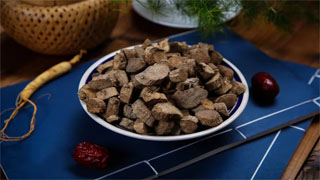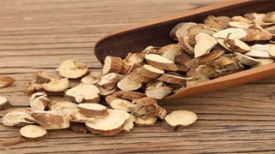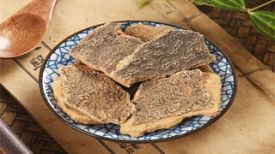
1. Alias
Huaixi, Duijie Cai, Shanamaranth, Tieping Knee, Huaixi, Hongxi.2. Plant morphology
Perennial herb. Height of 30-100 centimeters. The root is slender and cylindrical. The stem is upright, square shaped, with slightly swollen stem nodes and sparse soft hairs. Leaves opposite, elliptical or inverted oval shaped, wedge-shaped or broadly wedge-shaped, entire margin, both sides covered in soft hairs. Spike inflorescence axillary and terminal, up to 10 cm in length; The flower folds downwards and is close to the main stem, which is covered in soft hairs. Bract 1, membranous, broadly ovate, apex spiky; Xiaoyaopian 2, hard spiny, with egg shaped membranous small fragments on both sides of the base; Periphyllum 5, green, lanceolate, often with one vein, margin membranous; There are 5 stamens, and the lower part of the stamen is fused with the ovary, forming a cup-shaped connection with the degenerated stamen. The degenerated stamen is shorter than the stamen, tongue shaped, and has a flat or shallow wavy top; The ovary is superior. The fruit is oblong in shape. The flowering period is from July to August, and the fruiting period is from September to November.
3. Origin distribution
Born on mountain slopes, under forests, and along roadsides. Distributed in Shaanxi, Shanxi, Shandong and other places.
4. Harvesting and processing
When the stems and leaves wither in winter, dig them up, remove the roots and sediment, tie them into small bundles, sun dry until they are dry and wrinkled, cut the top evenly, and dry them in the sun.
5. Characteristics of medicinal herbs
Slender cylindrical, mostly straight, some slightly curved, 15-50 (90) centimeters long, 0.4-1 centimeters in diameter. The surface is grayish yellow or light brown, with slightly twisted and fine vertical wrinkles, horizontal long pores, and sparse fine root marks. Hard and brittle in texture, easy to break, becomes soft when exposed to moisture, flat in cross-section, yellow brown in color, slightly keratinized and oily, with a larger central vascular bundle in the woody part, yellow white in color, and scattered with numerous punctate vascular bundles arranged in 2-4 rounds around its periphery. The aroma is subtle, the taste is slightly sweet and slightly bitter.
6. Sexual Taste Returning to the Classics
Flat in nature, bitter and sour in taste. Return to the liver meridian and kidney meridian.
7. Effect and Function
Tonifying the liver and kidneys, strengthening muscles and bones, removing blood stasis and promoting meridian circulation, and promoting blood circulation. Belonging to the subcategory of blood activating and stasis removing drugs, it is a blood activating and meridian regulating medicine.
8. Clinical application
Dosage: 4.5-9 grams, decoct in water and take orally. Used to treat soreness in the waist and knees, weakness in muscles and bones, menstrual disorders, and liver yang dizziness.
9. Pharmacological components
Modern pharmacological evidence has shown that it has anti fertility effects and strong excitatory effects on uterine smooth muscle. The extract has anti-inflammatory and analgesic effects, as well as hypoglycemic and lipid-lowering effects. It has an immune enhancing effect on animals with normal or low immune function, and can enhance both cellular and humoral immunity. In addition, it has been confirmed to have anti-aging and anti-tumor effects. It has a certain inhibitory effect on the heart, can dilate blood vessels, lower blood pressure, has anti ulcer, anti-inflammatory and analgesic, choleretic, uterine excitation, anti fertility, anticoagulant, anti stasis, blood glucose lowering, lipid-lowering, protein assimilation, enhances immunity, delays aging, diuresis and other effects.
10. Main components
Containing saponins. Hydrolysis of triterpenoid saponins yields oleanolic acid, glucuronic acid, etc; It also contains ecdysterone, achyranthes ketone, β - ecdysterone, amaranth ketone, β - sitosterol, serine, glutamic acid, allantoin, succinic acid, and the immunologically active Achyranthes peptide polysaccharide ABAB.
11. Usage taboos
It is prohibited to take any medication that causes sinking of qi, diarrhea due to spleen deficiency, unstable lower body fluids, nocturnal emissions, excessive menstruation, or pregnant women.
12. Compatibility prescription
① To treat cold numbness, foot and knee pain and weakness: 30g of Achyranthes (soaked in wine, cut and baked), 15g of Cinnamomum cassia (with rough skin removed), and 30g of Cornus officinalis. Add three flavors and grind them into powder. Take 6 grams of hollow warm wine per serving and repeat daily. (From the General Record of St. Ji, Achyranthes Powder)
② Treatment of hypertension: 15 grams each of Achyranthes bidentata and Rehmannia glutinosa, 9 grams each of Paeonia lactiflora, Paeonia lactiflora, and Chrysanthemum, decoct in water and take orally. (Xinjiang Chinese Herbal Medicine)
③ To treat dysentery, red first and then white: 90 grams of Achyranthes. Crush it, drink one liter of wine, soak it overnight, drink two cups per serving, three times a day. (Behind the Elbow)
④ Treating dental caries: 30g of Achyranthes (burned to ashes). Grind thoroughly until fine, then apply a small amount between the teeth and include it. (Holy Blessing Formula)
⑤ To treat sores and ulcers on the mouth and tongue: 30g of Achyranthes (without seedlings), filed with a fine file, add one cup of water and half a cup of wine, and fry together until 70%. Remove the impurities and take a sip while warming up. (Holy Blessing Formula)
⊙ The content of the article is for clinical reference only. Non TCM professionals are not allowed to test drugs.


